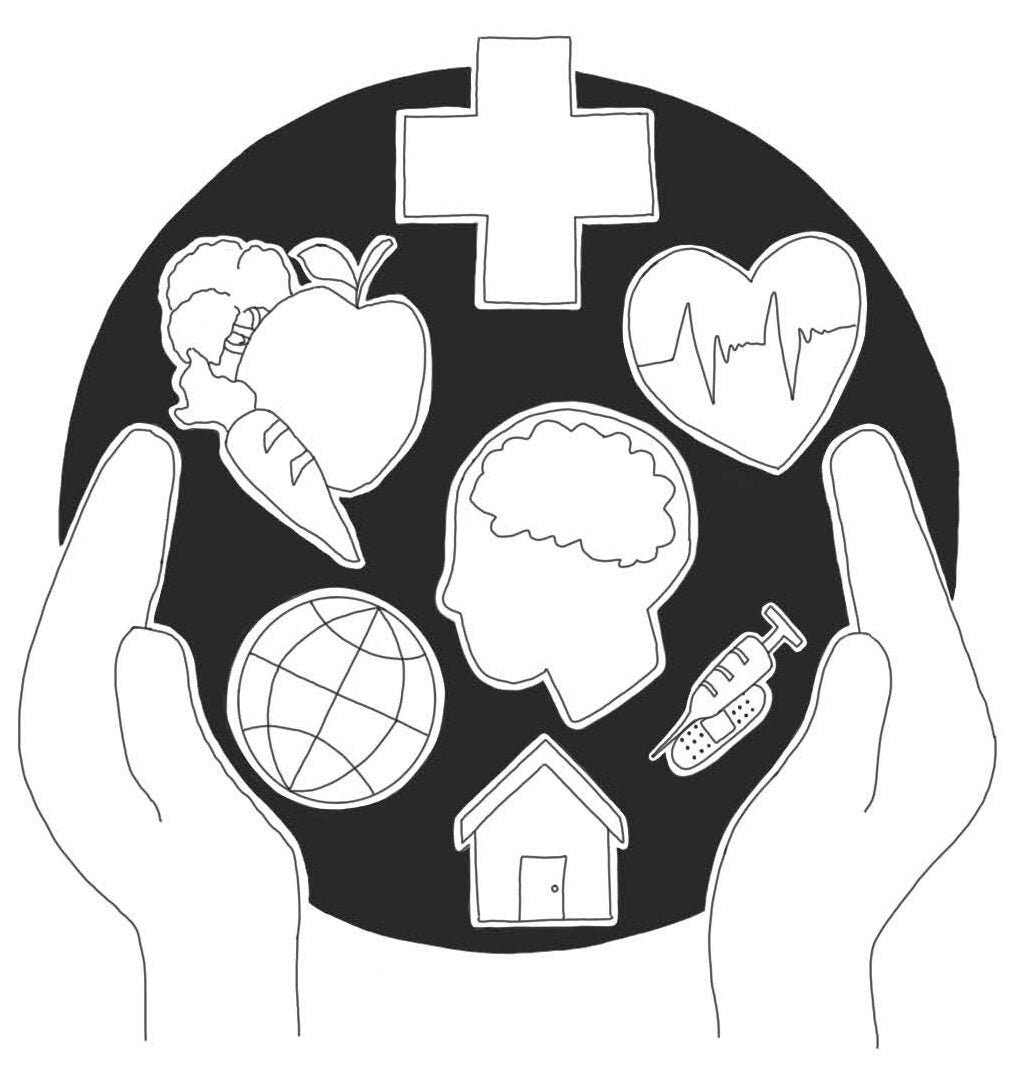Welcome, public health professionals, to the STRIPED Advocacy Playbook!
 Public health professionals tend to have a deep understanding of how health and life expectancy are shaped by external forces – and not merely genetics or luck of the draw. External forces such as air and water quality, the presence or absence of marketing and healthful or harmful consumer products, the walkability and bikeability of a community, differential investment in schools, housing, and neighborhoods across communities, preventative health services, vaccines, stable employment, systems of racism and other forms of discrimination, differential access to resources and power, and more all influence health at the individual and population level. Improving these conditions is a responsibility that falls to government at the local, county, state, tribal, and federal levels.
Public health professionals tend to have a deep understanding of how health and life expectancy are shaped by external forces – and not merely genetics or luck of the draw. External forces such as air and water quality, the presence or absence of marketing and healthful or harmful consumer products, the walkability and bikeability of a community, differential investment in schools, housing, and neighborhoods across communities, preventative health services, vaccines, stable employment, systems of racism and other forms of discrimination, differential access to resources and power, and more all influence health at the individual and population level. Improving these conditions is a responsibility that falls to government at the local, county, state, tribal, and federal levels.
Public health professionals that want to put their ideas into action are moving increasingly to using public policy to impact public health – and it’s working. But while policy is seen as a cornerstone of public health, advocacy is still unchartered territory with few graduate programs offering practical coursework in the art, science, and sport of advocacy. So what’s the difference between policy and advocacy? Policy is the thing – the idea the law, the funding, the intervention put into place by government. Advocacy is the process by which we get government to make that change. Advocacy work is often messy, emotional, time-intensive, illogical, and intensely human. Relationships between people, lawmakers, community members, experts, the media, philanthropy, nonprofits and the private sector are all in the mix at any point in time. Relationships are at the heart of advocacy.
 When public health professionals adopt advocacy one of their primary vehicles for improving public health, the results are dramatic and long-lasting. Just think of the ways smoking rates began to plummet once we moved from educating the public about the dangers of smoking to passing policies that raised the prices of tobacco products, ended smoking in workplaces, and limited and enforced where, how, and to whom tobacco products can be sold. By changing the environment in which we live, we change public health. This Playbook does more than give you an understanding of advocacy as a powerful force for better public health, it gives you the tools and strategies to master it for yourself!
When public health professionals adopt advocacy one of their primary vehicles for improving public health, the results are dramatic and long-lasting. Just think of the ways smoking rates began to plummet once we moved from educating the public about the dangers of smoking to passing policies that raised the prices of tobacco products, ended smoking in workplaces, and limited and enforced where, how, and to whom tobacco products can be sold. By changing the environment in which we live, we change public health. This Playbook does more than give you an understanding of advocacy as a powerful force for better public health, it gives you the tools and strategies to master it for yourself!
Most likely, you have some idea of the kind of law you would like to pass. Maybe you want to prevent the sale of weight-loss supplements and muscle-building supplements to kids. Maybe you want to create incentives to get businesses to end the practice of digitally distorting photographs to alter body shape, size, or skin shade. Or maybe you have something different in mind. Whatever kind of policy change you are seeking, this Playbook will help you map out a winning plan.
Before jumping in, we wanted to level-set by offering some definitions that we will be using throughout the Playbook. You’ll see that we refer to the term “body confidence” throughout. We chose this affirmative description for the sake of consistency, but recognize that there are other terms that may work better for you and your campaign.
The language changes from time to time and different regions may prefer different terms. Please adjust your messaging to reflect the terms that best fit your campaign. See our Glossary of Terms.
If changing a state or local law sounds like a lot of work, it is, but it is not impossible. The impact that policy change can have on people’s lives is incredible! Successful advocacy efforts rely on the combination of time-tested practices that together can convince lawmakers to support your proposed policy change.
At STRIPED, we used the Power Prism® advocacy framework and we have included many of the Power Prism® tools and guidance into this playbook with enthusiastic support from its creators at My Power People LLC. The Power Prism® is a step-by-step plan that will help you recognize and act on opportunities to build momentum in a campaign for change.



